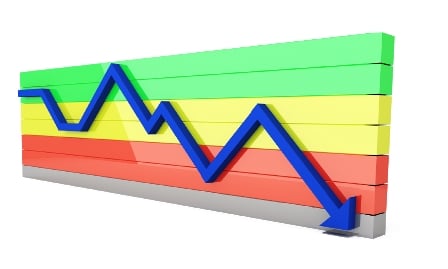While there’s no doubt Canada’s been hit hard by a commodity price slump, a leading economist suggests they’ve reached bottom despite tepid economic growth around the world

How bad is the commodity slump?
Finning International, the world’s largest Caterpillar heavy equipment dealer, recently announced it was laying off 1,100 people or 8% of its total global workforce. Finning’s major customers operate in the mining and energy sectors and have been hit hard by falling commodity prices. Finning’s CEO doesn’t see a turnaround anytime soon.
Looking to understand how the world’s economic growth affects commodity prices, WP reached out to Dundee Economics Chief Economist Dr. Martin Murenbeeld for his views on commodity prices and how global economic growth, or lack thereof, plays into them.
Although he is not very optimistic about the world economic outlook in 2016, he does see some light at the end of the tunnel when it comes to commodity prices, which could possibly make companies such as Finning breathe a little easier.
“We follow the IMF World Economic Outlook estimates of world growth; their projections call for 3.6% in 2016 and 3.1% this year,” Murenbeeld told WP. “We have a very popular chart where the change in real commodity prices year-over-year is plotted against world growth. When world growth drops below 4% in any year, real commodity prices are almost always negative year-over-year. It’s pretty consistent.”
While this is not exactly what commodity investors want to hear, Murenbeeld believes that much of the bleeding has already taken place and good things are just around the corner.
“The two [commodity] indices we chart are down sharply in 2015 over 2014 (yearly average), and depending on how much oil is in the index the decline is sharper. If commodity prices stay where they are now in 2016 the yearly averages will again be lower than in 2015,” said Murenbeeld. “The good news is that commodity prices could actually increase a little from here, and as long as the increase occurs at a slow rate the average next year will remain below the average of this year. This would corroborate the chart! But commodity prices could experience a very mild rising trend from this point forward. Indeed, I am biased to the scenario that commodity prices have about hit bottom.”
Advisors looking to position their clients for growth might consider moving back into the commodities markets - albeit at a very modest pace.
“We are recommending that advisors carefully dollar average into the commodity sector - not aggressively - just gently,” Murenbeeld recommends. “The commodity sector has been beat up terribly. Our models tell us that there is likely to be significant value in this sector. And so some dollar averaging might be quite useful.”
Finning International, the world’s largest Caterpillar heavy equipment dealer, recently announced it was laying off 1,100 people or 8% of its total global workforce. Finning’s major customers operate in the mining and energy sectors and have been hit hard by falling commodity prices. Finning’s CEO doesn’t see a turnaround anytime soon.
Looking to understand how the world’s economic growth affects commodity prices, WP reached out to Dundee Economics Chief Economist Dr. Martin Murenbeeld for his views on commodity prices and how global economic growth, or lack thereof, plays into them.
Although he is not very optimistic about the world economic outlook in 2016, he does see some light at the end of the tunnel when it comes to commodity prices, which could possibly make companies such as Finning breathe a little easier.
“We follow the IMF World Economic Outlook estimates of world growth; their projections call for 3.6% in 2016 and 3.1% this year,” Murenbeeld told WP. “We have a very popular chart where the change in real commodity prices year-over-year is plotted against world growth. When world growth drops below 4% in any year, real commodity prices are almost always negative year-over-year. It’s pretty consistent.”
While this is not exactly what commodity investors want to hear, Murenbeeld believes that much of the bleeding has already taken place and good things are just around the corner.
“The two [commodity] indices we chart are down sharply in 2015 over 2014 (yearly average), and depending on how much oil is in the index the decline is sharper. If commodity prices stay where they are now in 2016 the yearly averages will again be lower than in 2015,” said Murenbeeld. “The good news is that commodity prices could actually increase a little from here, and as long as the increase occurs at a slow rate the average next year will remain below the average of this year. This would corroborate the chart! But commodity prices could experience a very mild rising trend from this point forward. Indeed, I am biased to the scenario that commodity prices have about hit bottom.”
Advisors looking to position their clients for growth might consider moving back into the commodities markets - albeit at a very modest pace.
“We are recommending that advisors carefully dollar average into the commodity sector - not aggressively - just gently,” Murenbeeld recommends. “The commodity sector has been beat up terribly. Our models tell us that there is likely to be significant value in this sector. And so some dollar averaging might be quite useful.”



